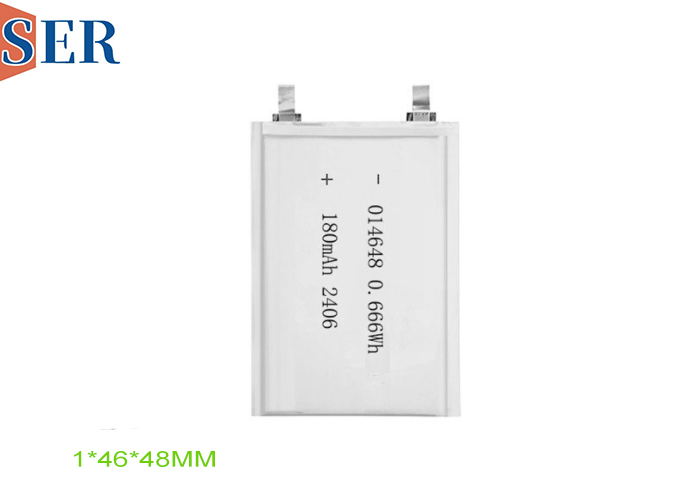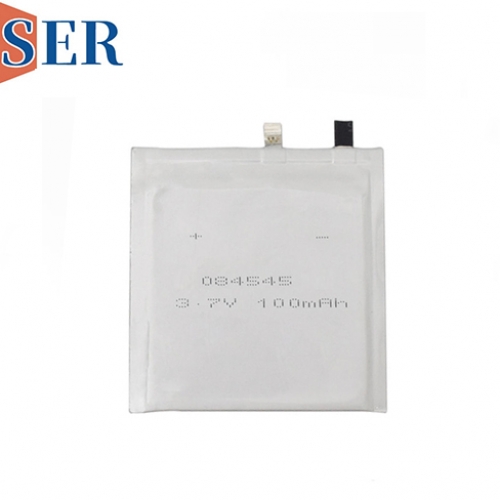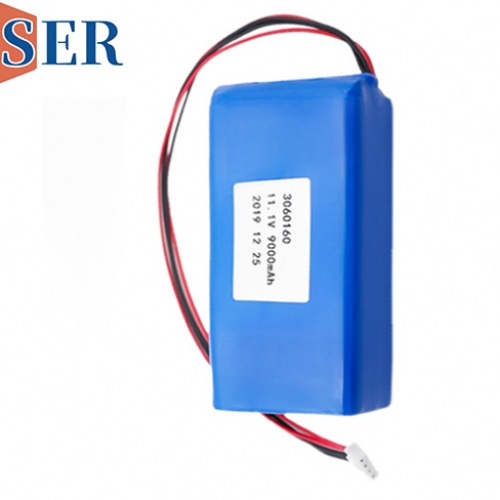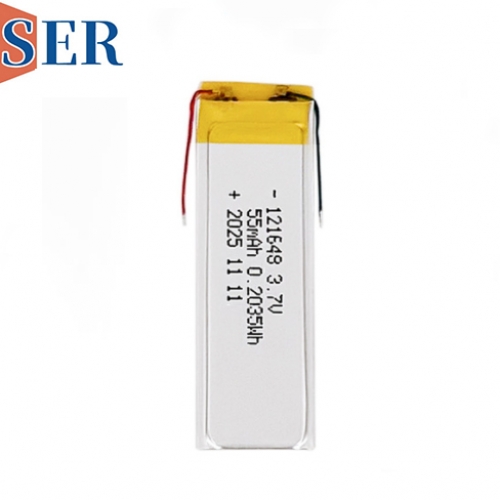014648 Ultra-Thin Rechargeable Polymer Lithium Batteries for Wearable and Portable Electronics
Ultra-Thin Rechargeable Polymer Lithium Batteries for Wearable and Portable Electronics

Abstract:
This article explores the latest developments in ultra-thin rechargeable polymer lithium batteries, specifically focusing on the 014648 model, a 3.7V rechargeable ultra-thin pouch cell designed for electronic devices, including wearable technology and portable gadgets. The battery, characterized by its 1mm thickness and pure cobalt construction, is particularly suited for applications such as ETC card lighting, electronic business cards, and fill lights. The discussion includes the battery's technical specifications, design considerations, advantages over traditional battery types, and potential applications in the rapidly evolving landscape of wearable and portable electronics.
Keywords: ultra-thin polymer lithium battery, 014648 model, rechargeable batteries, wearable devices, electronic cards, portable electronics
Introduction
The advent of wearable technology and portable electronic devices has led to an increased demand for compact, lightweight, and efficient power sources. Traditional battery technologies, such as cylindrical and prismatic cells, often struggle to meet the stringent size and weight requirements of these modern gadgets. Polymer lithium batteries, particularly ultra-thin variants, have emerged as a promising solution, offering a combination of high energy density, flexibility, and safety. This article delves into the specifics of the 014648 ultra-thin polymer lithium battery, highlighting its design, performance, and potential applications.
Technical Specifications of the ultrathin battery 014648
The 014648 ultra-thin polymer lithium battery is a 3.7V rechargeable pouch cell designed for ultra-compact electronic devices. Key technical specifications include:
Nominal Voltage: 3.7V
Capacity: Varies depending on the specific configuration but typically ranges from 50mAh to 200mAh
Dimensions: 14mm (length) x 64mm (width) x 1mm (thickness)
Weight: Approximately 1.5g to 3g, depending on capacity
Chemistry: Lithium polymer (Li-polymer) with a pure cobalt cathode
Cycle Life: Up to 500 charge-discharge cycles at 80% capacity retention
Operating Temperature Range: -20°C to 60°C
The battery's ultra-thin design, achieved through advanced lamination and stacking techniques, allows it to be integrated into devices with stringent size constraints. The use of pure cobalt in the cathode material enhances the battery's energy density and voltage stability, making it suitable for high-performance applications.
Design Considerations
The design of the 014648 battery is a result of careful consideration of several factors, including form factor, energy density, safety, and cost. The ultra-thin pouch cell format offers several advantages over traditional cylindrical or prismatic cells:
Flexibility: The flexible laminated structure of the pouch cell allows it to conform to the shape of the device, enabling more efficient use of space and reducing the overall form factor.
Weight Reduction: The lightweight nature of the polymer electrolyte and the absence of a rigid casing contribute to a significant reduction in weight, which is crucial for wearable devices.
Safety: The laminated structure provides better protection against mechanical damage and short circuits compared to traditional cells, while the use of advanced safety features, such as pressure relief valves and thermal shutdown mechanisms, further enhances safety.
Cost-Effectiveness: The manufacturing process for pouch cells is generally more cost-effective than that for cylindrical or prismatic cells, making them an attractive option for mass-produced electronic devices.
Advantages Over Traditional Battery Types
The 014648 ultra-thin polymer lithium battery offers several advantages over traditional battery types, including:
Higher Energy Density: The use of pure cobalt in the cathode material and the advanced lamination techniques employed in the manufacturing process result in a higher energy density compared to traditional lithium-ion batteries. This means that the battery can store more energy in a smaller and lighter package, making it ideal for wearable devices and portable electronics.
Improved Safety: The flexible laminated structure and advanced safety features of the pouch cell reduce the risk of thermal runaway and explosion, making it a safer option for consumer electronics.
Enhanced Flexibility: The ability of the pouch cell to conform to the shape of the device allows for more innovative and ergonomic designs, improving the user experience.
Lower Self-Discharge Rate: Polymer lithium batteries generally have a lower self-discharge rate compared to traditional lithium-ion batteries, which means that they can retain their charge for longer periods when not in use.
Applications in Wearable and Portable Electronics
The 014648 ultra-thin polymer lithium battery is well-suited for a wide range of wearable and portable electronic devices, including:
Wearable Devices: The battery's ultra-thin design and high energy density make it an ideal power source for smartwatches, fitness trackers, and other wearable gadgets. Its flexibility allows it to be integrated seamlessly into the device's form factor, while its safety features ensure reliable performance.
Electronic Cards: The battery's small size and lightweight nature make it suitable for use in electronic cards, such as ETC cards and electronic business cards. Its ability to provide a consistent power supply ensures that these cards can function reliably in various environments.
Portable Lighting: The 014648 battery can be used to power portable lighting devices, such as fill lights and keychain flashlights. Its high energy density and long cycle life make it a durable and reliable power source for these applications.
Medical Devices: The battery's safety features and compact size make it suitable for use in medical devices, such as hearing aids and insulin pumps. Its ability to provide a stable power supply ensures that these devices can function reliably and safely.
Challenges and Future Developments
Despite the numerous advantages of ultra-thin polymer lithium batteries, there are still several challenges that need to be addressed to fully realize their potential in wearable and portable electronics:
Cost: Although the manufacturing process for pouch cells is generally more cost-effective than that for traditional cells, the cost of raw materials, such as pure cobalt, can still be a significant barrier to widespread adoption. Future developments in battery chemistry and manufacturing techniques could help to reduce costs and improve the affordability of these batteries.
Scalability: The production of ultra-thin polymer lithium batteries on a large scale can be challenging due to the complex manufacturing process and the need for precise control over material properties. Future advancements in automation and process optimization could help to improve scalability and reduce production costs.
Environmental Impact: The production and disposal of lithium-ion batteries, including polymer lithium batteries, can have a significant environmental impact. Future developments in battery recycling and sustainable materials could help to mitigate these environmental concerns.
In the future, we can expect to see further advancements in ultra-thin polymer lithium battery technology, including:
Increased Energy Density: Researchers are continually exploring new materials and manufacturing techniques to improve the energy density of polymer lithium batteries, which could lead to longer battery life and smaller form factors for wearable and portable electronics.
Improved Safety: Future developments in battery safety features, such as advanced thermal management systems and improved separator materials, could further enhance the safety of ultra-thin polymer lithium batteries.
Enhanced Flexibility: The development of new materials and manufacturing processes could enable the production of even more flexible and conformable pouch cells, opening up new possibilities for innovative device designs.
Conclusion
The 014648 ultra-thin polymer lithium battery represents a significant advancement in battery technology, offering a combination of high energy density, flexibility, and safety that makes it well-suited for wearable and portable electronic devices. Its ultra-thin design and lightweight nature enable it to be integrated seamlessly into devices with stringent size and weight constraints, while its advanced safety features ensure reliable performance and user safety. As the demand for compact, lightweight, and efficient power sources continues to grow, ultra-thin polymer lithium batteries are likely to play an increasingly important role in the future of wearable and portable electronics. However, to fully realize their potential, it is essential to address the challenges associated with cost, scalability, and environmental impact, and to continue to drive innovation in battery chemistry and manufacturing techniques.





